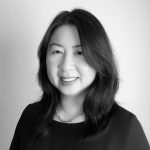Many families delay considering hospice care because of widespread misconceptions – fearing it means “giving up” or accelerates death. In reality, hospice focuses on quality of life, providing comfort, pain management, and emotional support when curative treatments are no longer beneficial.
To help families make informed decisions, we’re debunking five common hospice myths, from who qualifies to how it works. Understanding the truth can empower you to choose compassionate care that honors your loved one’s wishes, without unnecessary fear or guilt.

Hospice Care is Often Misunderstood
One of the biggest hospice myths is that it’s only for people who are expected to pass away in days or weeks.
Common misunderstandings like this can discourage people from learning more about services that could improve quality of life for seniors and families.
We explain hospice and dispel five common myths that often prevent people from asking whether it would be helpful for their older adult.
What is Hospice Care?
The main goal of hospice care is to make an older adult as comfortable as possible.
Hospice care combines pain and symptom management with emotional and spiritual support for seniors and families.
Visiting nurses eliminate the need to visit a doctor’s office, and families can receive help with personal care tasks, such as bathing.
On-call help and support are always available – 24 hours a day, 7 days a week.

The Top 5 Myths About Hospice and How to Debunk Them
Myth: Hospice is Only For the Last Few Days of Life
The reality is that many people in hospice receive care for six months or longer.
To be eligible for hospice care under Medicare, seniors must have Medicare Part A and a doctor’s certification that they are expected to live for six months or less.
It’s critical to know that this is entirely different from saying that someone will pass away within 6 months.
After 6 months, if your older adult’s condition has improved, they may be discharged from hospice care and return to a lower level of care.
However, if they still require the same level of care, the doctor and hospice team will recertify that hospice services remain appropriate.
And as long as the doctor certifies that your older adult meets the 6-month criteria, Medicare will continue to cover hospice care.
VIDEO: Debunking the Top 5 Hospice Myths
Myth: When a Person Accepts Hospice Care, They’re Going to Die
Getting hospice care doesn’t mean giving up hope or that death is around the corner.
Hospice can often help stabilize a patient’s medical condition and better manage pain.
If their health condition improves, patients can leave hospice care at any time and return if and when needed.
Myth: Choosing Hospice Means Giving Up Other Medical Treatments
Hospice care aims to improve quality of life by better managing pain and symptoms.
Every case is unique, but treatments that help manage pain and symptoms will generally continue, while aggressive disease treatments are more likely to be discontinued.
However, it’s essential to know that each hospice company has its own policies.
Always verify that the specific medications or treatments your older adult needs or wants are included in the company’s services.
Myth: Hospice Care Only Happens At a Care Facility
Hospice care can be provided in various settings, not just a single location. You can find hospice care providers that offer care at home or in an LTC facility.
People can receive hospice care in various settings – at home, in a hospital, or in a care facility.
Myth: Hospice Care is Expensive
People with Medicare coverage typically pay little or nothing for hospice care.
Most insurance plans, including HMOs and managed care plans, also offer hospice coverage.
Hospice is not about dying – it’s about living as fully as possible with the time that remains. When families understand that hospice often extends life expectancy compared to aggressive end-of-life treatments, it changes the conversation completely.” — Dr. Ira Byock, Palliative Care Physician and Author of The Four Things That Matter Most
| Myth | Fact |
|---|---|
| “Hospice means giving up on treatment.” | Hospice shifts focus to pain management and quality of life, but patients still receive medical care for comfort. |
| “Hospice is only for the last days of life.” | Patients qualify with 6-month prognosis, but many benefit for months or years (recertification is possible). |
| “You can’t keep your own doctor.” | Your doctor can collaborate with hospice teams (and many do!). |
| “Hospice is unaffordable.” | Medicare/Medicaid cover 100% of hospice (room/board may have limits). |
| “Hospice drugs ‘speed up’ death.” | Medications manage pain/breathing, not hasten death (strict ethics rules apply). |
Final Thoughts About Hospice Care
Understanding the truth about hospice care can lift a heavy burden of fear and uncertainty, allowing you to see it for what it truly is: a gift of comfort, dignity, and specialized support. By replacing these common myths with facts, you empower yourself to make informed, compassionate decisions focused entirely on quality of life.
If hospice becomes a consideration, remember it’s not about giving up; it’s about wrapping your loved one in the deepest level of care and ensuring their journey is met with peace and respect. We encourage you to speak with a hospice provider to get your specific questions answered – they are invaluable partners in compassionate care.
Recommended for you:
- Choosing a Hospice Provider: Top Questions to Ask
- 9 Top Questions About Palliative Care vs. Hospice Care
- Hospice Care Isn’t a Death Sentence: Get the Facts
About the Author

Connie is the founder of DailyCaring.com and was a hands-on caregiver for her grandmother for 20 years. (Grandma made it to 101 years old!) She knows how challenging, overwhelming, and all-consuming caring for an older adult can be. She also understands the importance of support, especially in the form of practical solutions, valuable resources, and self-care tips.













Thank you for this! Ensuring people truly understand the truth about hospice is so important. However, I think one comment in your post that hospice is for ‘their older adult’ might cause a little confusion. Hospice is really not related to age, it is available at any age for a wide range of serious illnesses. But you guys do a great job and cover so many important topics for caregivers!! Keep up the good work!
That’s absolutely true. Hospice is a helpful service for people of any age who could benefit from that type of care. We focus on older adults because our website is dedicated to supporting families who are caring for older adults and our articles are written especially for this audience.
My sister&brother-law both had hospice was wonder people there.both died in hosiptal
I’m so sorry for your losses 💔 It’s great that you had a wonderful experience with hospice.
does hospice have any care for dimensia
You’d need to ask your specific hospice provider if they have staff who are trained in dementia care.
My mom gets hospice in our home. At first I thought that mom was declining very fast and that is why they brought hospice up to begin with. But that is definitely not the case. Hospice had been wonderful and the people involved in moms care. Thier is so many great things to make mom comfortable. She has been in for nearly 6 months . Since she is doing so well she will go back to palative care.
If there is a decline again she will be evaluated again.
Also having an elder coach from AARP has been a lifesaver because you need support for yourself. God Bless .
That’s wonderful! It’s great that your mom is doing so well and able to “graduate” from hospice. It sounds like the support you’re getting is fantastic 🙂
My mom had 3 years of hospice care while at home. I moved in to take care of her and a hospice nurse came twice a week, an aide came twice a week. There was a social worker available and a chaplain if we needed them. They even provided a wonderful volunteer who came 1 afternoon a week so I could go out and get groceries and run other errands. She became like a member of the family. It was all paid for by Medicare – meds, oxygen, wheelchair, shower chair, walker, everything. It was a godsend for mom as she would have never had the money to pay for her meds (27 of them a day) let alone the other things she needed. While it was a long terrible time to see my mom so ill, it was made so much better by the hospice team.
I’m so happy to hear that you had a wonderful experience with hospice and that they made such a difference in your mom’s care. It’s a huge benefit that you got so much support too ❤️ Even better that it was all covered by Medicare!